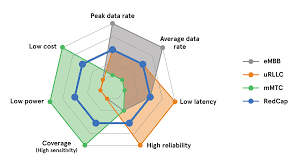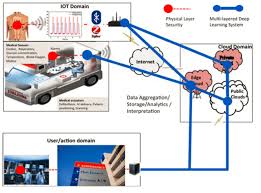SCMA in 5G Networks: Boosting Network Efficiency and Performance
telcomatraining.com – The evolution of wireless communication technologies has drastically transformed the way we connect, communicate, and consume information. With the advent of 5G networks, the demand for faster, more reliable, and efficient data transmission has skyrocketed. One of the groundbreaking innovations that is helping meet these demands is Sparse Code Multiple Access (SCMA). This technology has become pivotal in enhancing network efficiency and performance within 5G networks, addressing challenges such as high data rates, massive connectivity, and low latency.
What is SCMA?
Sparse Code Multiple Access (SCMA) is a non-orthogonal multiple access (NOMA) technique designed to improve the performance of wireless communication networks, especially in 5G systems. Unlike traditional orthogonal multiple access (OMA) schemes like Frequency Division Multiple Access (FDMA) or Code Division Multiple Access (CDMA), SCMA allows multiple users to share the same time-frequency resources by encoding their data in a sparse and non-orthogonal manner. This enables a higher number of simultaneous users, making it a critical enabler for massive machine-type communications (mMTC) and ultra-reliable low-latency communications (URLLC).
The Role of SCMA in 5G Networks
5G networks are designed to handle an unprecedented number of connected devices, cater to diverse applications, and support extremely high data rates. SCMA plays a significant role in addressing these demands in the following ways:
- Increased Capacity and Connectivity: SCMA enhances the capacity of a 5G network by allowing more users to share the same resources. This is crucial in scenarios with a massive number of Internet of Things (IoT) devices or users in densely populated areas. By using sparse coding, SCMA efficiently accommodates a large volume of users without sacrificing performance.
- Improved Spectral Efficiency: One of the most significant benefits of SCMA is its ability to improve spectral efficiency, which refers to the efficient use of available bandwidth. SCMA allows for the simultaneous transmission of multiple data streams over the same frequency band, improving the overall throughput of the network. This is particularly important in 5G networks, where the efficient use of spectrum is essential to meet the growing demand for data.
- Low Latency Communication: SCMA is designed to support ultra-reliable low-latency communications (URLLC), one of the key use cases for 5G technology. In applications such as autonomous driving, remote surgeries, and industrial automation, reducing latency is critical. SCMA minimizes the delay in transmitting data between devices by enabling faster and more reliable communication, making it an essential component for 5G’s mission to provide real-time communication.
- Enhanced Energy Efficiency: SCMA helps optimize power consumption, an essential factor in supporting energy-efficient 5G networks. By reducing the number of required transmissions and enabling devices to operate in a more efficient manner, SCMA minimizes the overall energy consumption in the network. This is particularly important for IoT devices, which often rely on battery power and need to operate efficiently for extended periods.
How SCMA Boosts Network Efficiency and Performance
SCMA enhances both network efficiency and performance through several key features:
- Non-Orthogonal Resource Sharing: SCMA utilizes non-orthogonal resource allocation to allow multiple users to share the same frequency-time resources without interference. By assigning sparse codes to each user, SCMA ensures that even in high-density environments, the network can handle a larger number of users and devices efficiently.
- Codebook Design: The codebook in SCMA is designed to optimize the signal space. By using a set of sparse codes, SCMA can transmit multiple symbols with fewer resources compared to traditional methods. This reduces the complexity of the network and improves the throughput without overwhelming the system.
- Advanced Signal Detection Techniques: SCMA leverages advanced detection techniques, such as message passing and belief propagation, to decode the signals efficiently. These techniques improve the reliability of data transmission, even in noisy environments, ensuring a higher success rate in data delivery.
- Support for Multiple Use Cases: SCMA is highly versatile and can be adapted to different use cases in 5G networks, including mMTC, enhanced mobile broadband (eMBB), and URLLC. Whether it’s supporting massive IoT deployments or enabling real-time communications for mission-critical applications, SCMA optimizes the network’s performance based on specific requirements.
Challenges and Future Outlook
While SCMA offers substantial benefits, it is not without its challenges. The complexity of codebook design, signal detection, and interference management can pose difficulties in practical implementation. Additionally, the full potential of SCMA can only be realized when paired with other advanced 5G technologies, such as Massive MIMO and beamforming.
However, as research and development in 5G and beyond continue to evolve, it is expected that SCMA will become an integral part of the global 5G ecosystem. Future advancements in machine learning and artificial intelligence may also aid in optimizing SCMA-based systems, making them even more efficient and adaptable to varying network conditions.
Conclusion
SCMA is a transformative technology in the world of 5G, offering enhanced network efficiency, improved spectral use, and the ability to support a massive number of devices simultaneously. As 5G networks continue to expand and evolve, SCMA will remain a critical enabler in ensuring high performance, low latency, and energy-efficient communication. Its ability to optimize resources while maintaining high quality of service will play a crucial role in meeting the diverse needs of future wireless networks, from everyday mobile broadband to ultra-reliable industrial applications.







